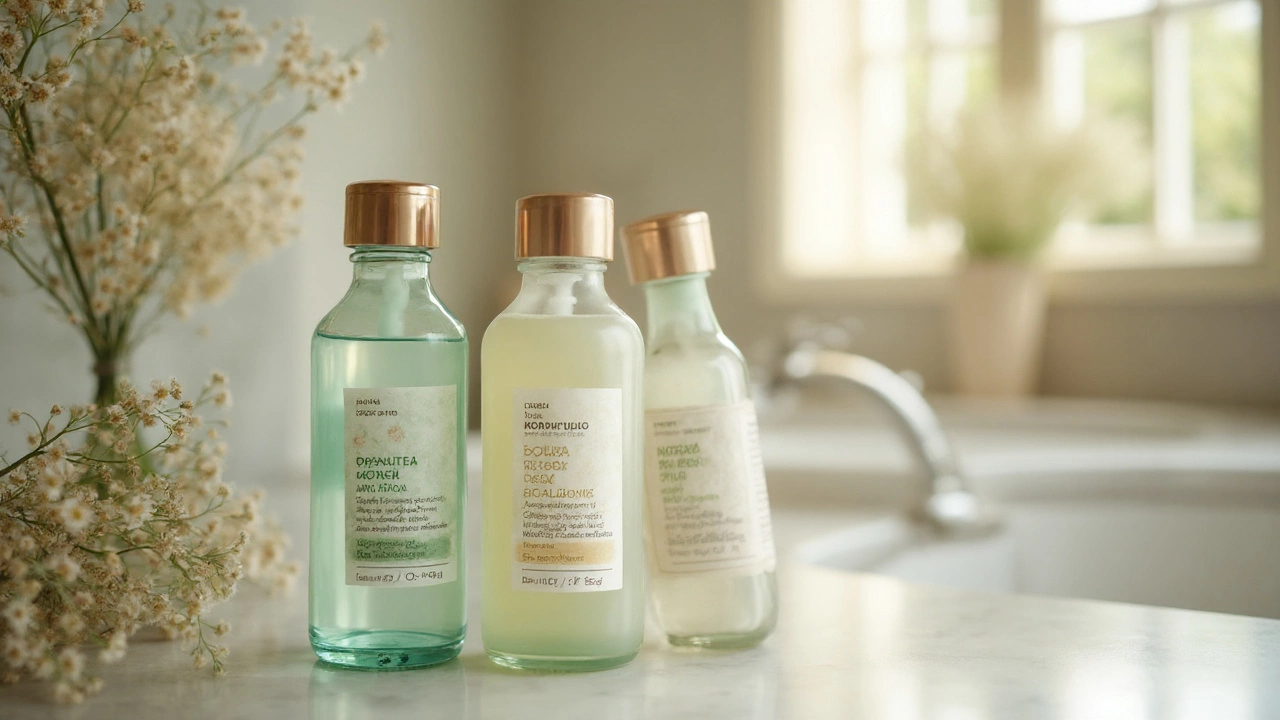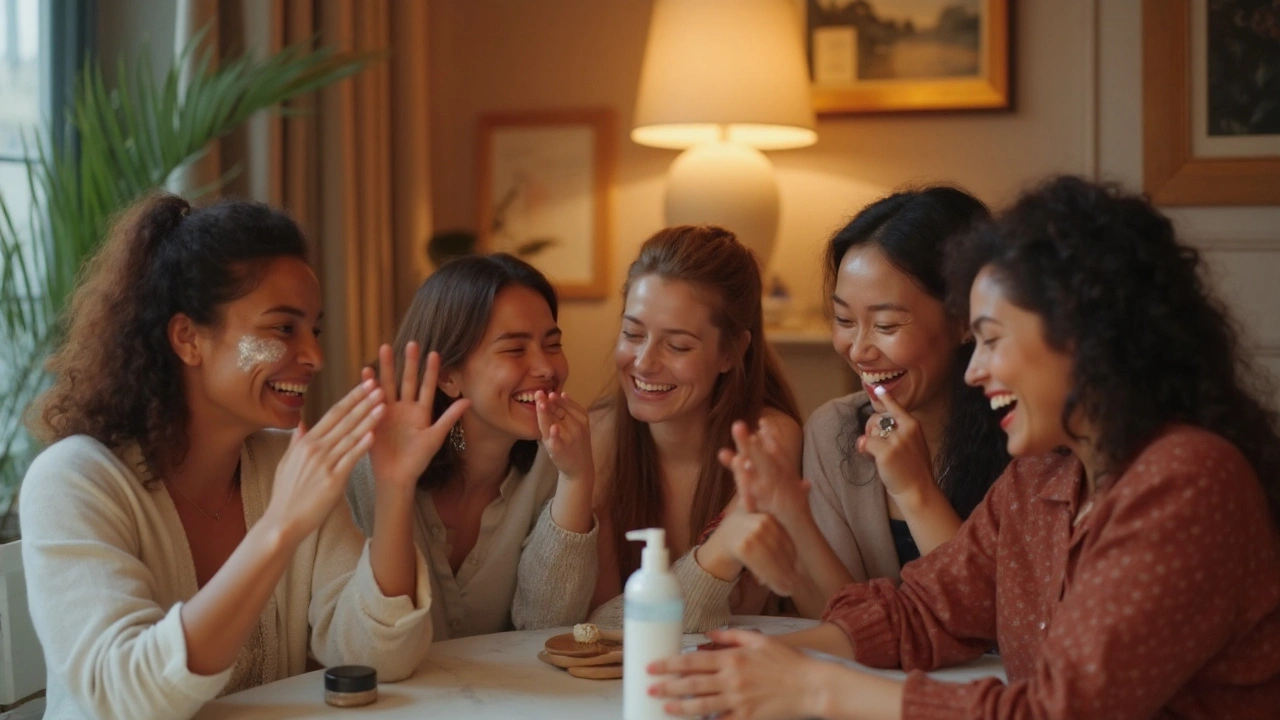
You might’ve heard whispers about flawless “glass skin” from Korea, but the real trick isn’t just about genetics or pricey face masks—it’s the Korean toner method. Instagram feeds are bursting with dewy, bouncy faces claiming, “My toner routine changed my life.” Is this just skincare hype, or is there something magical about layering toner in a ritualistic way?
Korean beauty routines have been famous for sending simple skincare rules out the window. Here’s a spoiler: the toner method is nothing like the old-school swipe-with-a-cotton-ball. The Korean toner method, sometimes called the “7-skin method,” is about drenching your skin in layers of hydration, not just once or twice, but several times in a row. It sounds over the top, right? But K-beauty fans swear by it—and dermatologists around the world are starting to take notice. The goal isn’t to strip the skin but to flood it with lightweight moisture until you get that plump, juicy glow.
How Does the Korean Toner Method Actually Work?
The heart of the Korean toner method is pretty simple: it’s all about layering. Instead of applying one thick glob of moisturizer or a single splash of toner and calling it a night, you pat on toner after toner (usually from three up to seven times—yes, really!). Each layer gets gently patted in with your hands, not rubbed in harshly or wiped off with a cotton pad. The reasoning? Lighter, multiple layers help each drop of hydration soak deeper in, and your skin absorbs moisture more efficiently this way. No greasy bumpiness, no sticky residue, just soft, plump skin.
Forget those toners that sting or smell like nail polish remover. Korean toners are worlds apart: they focus on gentle, hydrating, and non-irritating formulas. You’ll barely find harsh alcohols or strong acids in formulas for the 7-skin method. Instead, think of ingredients you’d want in a fancy drink—rose water, green tea, hyaluronic acid, centella asiatica, or fermented extracts. These ingredients refresh and calm, setting the stage for everything you put on top to work even harder.
Dermatologist Dr. Suzy Kim, featured in Harper’s Bazaar Korea, describes the effect like this:
"By applying toner in layers, you aren't just adding extra water—you're restoring balance and prepping your skin barrier for maximum absorption of serums and moisturizers."Most users find lightweight, non-sticky formulas work best. “If that first layer sinks right in, go for another! Listen to your skin,” says Korean skincare trainer Min-Ji Park. Not every skin needs a full seven layers—some get glassy at three; others, with dry air or harsh winters, may crave more. So, there’s no strict rule—just what feels right for you.
| Step | Traditional Toner | Korean Toner Method |
|---|---|---|
| Application | 1 swipe, cotton pad | 3-7 layers, hands/fingers |
| Main Purpose | Remove residue, balance pH | Hydration, prepping barrier |
| Main Ingredients | Alcohol, witch hazel | Botanical extracts, humectants |
| Skin Feel | Tight, sometimes dry | Plump, soft, dewy |
This method started grabbing attention online around 2017, inspired by “7-skin” discussions on beauty forums like Naver and Lady. The method shot from a homegrown K-beauty hack to shelves in Sephora, and now beauty stores in Auckland and Sydney stock toners labeled as “7-layer safe.” Even major brands like Laneige and Innisfree have launched watery, alcohol-free formulas specifically for layering—proof of just how mainstream the method’s become.

Step-by-Step Breakdown: How Do You Actually Do It?
The beauty of the Korean toner method is that you don’t need to memorize a script or master mysterious techniques. It’s actually one of the most soothing and mindful (even meditative) ways to treat your face. Here’s the secret sauce: slow, deliberate layers, listening to your skin every step of the way.
So, what’s the process? Start with clean skin. After cleansing—no need to overdo it, just a gentle foaming wash is fine—get your toner ready. Pour a bit (usually about a five-cent piece) into your palm and gently press it onto your whole face, working from the center outwards. Use your fingertips to lightly tap it in—don’t drag or rub. Once you feel the toner’s pretty much absorbed—your skin might feel slightly cool or a bit ‘bouncy’—repeat. You don’t need to wait ages between layers; just make sure each one sinks in. Keep layering until you reach three to seven passes.
Some tips for best results:
- Pick toners low in alcohol and fragrances. Gel or watery essences work great. Avoid anything stingy or sticky—your face shouldn’t feel tight.
- Try mixing different toners if your skin needs both calming and hydration. For example, do three passes with a centella toner and three more with a hyaluronic toner.
- Listen to what your skin tells you. On muggy summer days, three layers might be plenty; when that winter wind in Auckland is howling, double up.
- For extra plump cheeks, finish with a lightweight moisturizer or sleeping mask to seal in the dewiness, especially before bed.
If your skin’s extra sensitive, start with fewer layers and work up. Some folks report minor breakouts the first week if they use rich toners or rush absorption—so go slow and observe what works. For those with oily skin, don’t worry: properly moisturizing can actually balance oil production, not make things worse. Curious about results? A 2020 survey from GlowPick, a Korean product review site, found 81% of users who tried the 7-skin method noticed their skin feeling softer and smoother in under a week. That’s real-life feedback, not just marketing talk.
Here’s a sample toner routine using real-world products:
- K-beauty hydrating toner (try Isntree Hyaluronic Acid Toner Light)
- Balancing toner (like Klairs Supple Preparation Unscented)
- Calming toner (Benton Centella Toner if your cheeks flush easily)

The Science and Benefits Behind All Those Layers
The reason why hydration fixes so many skin problems comes down to the skin barrier. Our outermost layer, the stratum corneum, acts like a wall of bricks and mortar—except those bricks can get chipped or leaky if it’s dry or inflamed. When you bombard your skin with repeated thin layers of hydration, you help fill in those gaps and keep water locked in. The skin’s surface gets plumper, and fine lines look softer. Experts say well-hydrated skin can even better protect itself against daily pollutants and irritants in city air (which is definitely handy here in Auckland, with all the salty breeze and sunshine).
This isn’t just theory. A study by AmorePacific, South Korea’s biggest beauty conglomerate, showed that applying seven layers of hydrating toner increased the skin’s moisture content by nearly 60% compared to a single layer. The key, they found, was the repetition and the lightweight formula—heavy creams couldn’t mimic the same effect without feeling greasy. That’s why the 7-skin method is less about a magic number and more about a method. You ‘feed’ your skin sips of water, not all at once, so it can drink up what it needs.
What about those chasing glass skin? The dewy, almost ‘see-through’ look comes from light reflecting off smooth, hydrated skin. To get there, you actually need to focus on skin health, not heavy layers of makeup. The Korean toner method is at the core of this: so many Instagram influencers and K-drama stars post bare-faced “before and after” selfies showing the transformation from dull, dry skin to juicy, almost glowing finishes—most crediting this routine as their main driver.
Another surprising benefit? Even acne-prone skin can benefit. Over-cleansing or skipping moisturizer is one of the biggest mistakes for oily or breakout-prone skin. Proper hydration tells your skin to stop over-producing oil, giving it a balanced, happy place to thrive. For anyone battling hormonal breakouts or flakiness (especially in changing climates or seasons), layering soothing toners is a safe and non-irritating fix.
It’s not just a TikTok fad. Beauty editors at Allure Korea have praised the method for making expensive serums and treatments more effective, because the skin barrier can actually take them in. Dr. Hyejin Yoon from Seoul National University’s Department of Cosmetic Science summed it up:
"Hydrated skin is resilient skin. The 7-skin method works because it respects your skin’s needs, not just current trends."
And sure, it’s not a silver bullet—if you’ve got severe eczema, rosacea, or medical skin conditions, always check with a dermatologist before throwing anything new into your mix. But compared to most beauty hacks, the Korean toner method is gentle, affordable (you can use drugstore toners!), and accessible for nearly any skin type.
So, the next time your skin feels tight, flaky, or you just crave that bouncy, hydrated look, give this method a shot. You’ll quickly see why it spread from the streets of Seoul to the vanities of Auckland—and why it’s got a loyal, glowing fanbase worldwide.